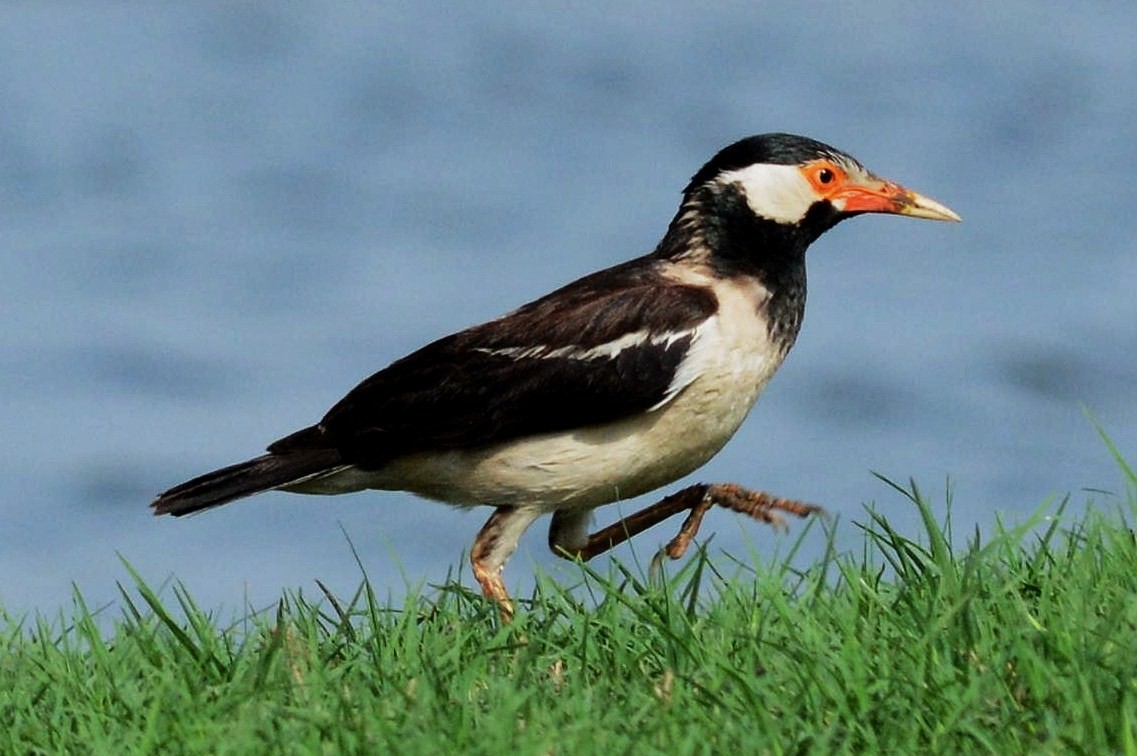Asian Pied Starling
A species of Asian Pied and Black-collared Starlings, Also known as Indian Pied Starling Scientific name : Gracupica contra Genus : Asian Pied and Black-collared Starlings
Asian Pied Starling, A species of Asian Pied and Black-collared Starlings
Also known as:
Indian Pied Starling
Botanical name: Gracupica contra
Genus: Asian Pied and Black-collared Starlings
Content
Description General Info
 Photo By Dr. Raju Kasambe , used under CC-BY-SA-4.0 /Cropped and compressed from original
Photo By Dr. Raju Kasambe , used under CC-BY-SA-4.0 /Cropped and compressed from original Description
This myna is strikingly marked in black and white and has a yellowish bill with a reddish bill base. The bare skin around the eye is reddish. The upper body, throat and breast are black while the cheek, lores, wing coverts and rump are contrastingly white. The sexes are similar in plumage but young birds have dark brown in place of black. The subspecies vary slightly in plumage, extent of streaking of the feathers and in measurements. The flight is slow and butterfly-like on round wings. Leucistic individuals have been recorded. 
Size
22 cm
Nest Placement
Tree
Habitat
Asian Pied Starling thrives in open, low-lying habitats often close to water and human activity. Favoring moist environments, it is found in grasslands, light woodlands, and along the edges of marshes, coasts, and mangroves. Adaptably, it populates areas altered by humans, including agricultural fields, parks, and suburban zones, even adapting to nest near sewage and garbage areas, facilitating its geographic expansion.
Dite type
Omnivorous
General Info
Feeding Habits
Bird food type
Behavior
These starlings are usually found in small groups, foraging mainly on the ground but perching on trees and buildings. Birds in a group call frequently with a wide repertoire that includes whistles, trills, buzzes, clicks, and warbling calls. Young birds taken into captivity have been trained to imitate tunes of other birds. Both sexes sing. They forage in fields, lawns and on open ground feeding on grains, fruit, insects, earthworms and molluscs usually taken from the ground. Like many other starlings, they often use a prying or gaping action, piercing soil and then opening apart the bill to dislodge hidden food. The strong protractor muscles allow them to part a mat of grass and their eyes are positioned to obtain a binocular view of the space between the parted beak. They often feed in grazing land or among cattle. The breeding season in India is spread from March to September. With the onset of breeding, the sizes of flocks decline and birds pair up. Courtship involves calling, fluffing of the feathers and head bobbing. The nest is a loose mass of straw formed into a dome with an entrance on the side and placed in a large tree (often banyan, mango, jackfruit, rosewood) or sometimes on man-made structures, often close to human habitation. Several pairs will breed in the same vicinity. The usual clutch is made up of about four to six glossy blue eggs. Each egg is laid with a day in between and incubation begins only after the third or fourth egg is laid. The eggs hatch after 14 to 15 days. The young are brooded for two weeks, the female staying at the nest during the night. Both parents feed the chicks until they fledge and leave after three weeks. More than one brood may be raised in a season. An instance of interspecific feeding, where an adult of a common myna fed a young pied myna has been reported. These mynas form communal roosts at night and jointly defend nesting areas. 
Distribution Area
The species is found mainly in the plains but in the foothills up to about 700m above sea level. They are found mainly in areas with access to open water. Their main distribution in India is from the Gangetic plains extending south to the Krishna River. Their range is increasing, with populations establishing more recently in Pakistan, Rajkot, and Bombay (since 1953), possibly aided by trade in caged birds and accidental escape. Their westerward spread in India particularly in parts of Rajasthan has been aided by changes in irrigation and farming patterns, and the spread into Sumatra has been aided by deforestation. The species has also established itself in Dubai, UAE. The habitat is lowland open areas with scattered trees near water, often near human habitation. This species is often seen at sewage farms and refuse tips. 
Species Status
Not globally threatened.